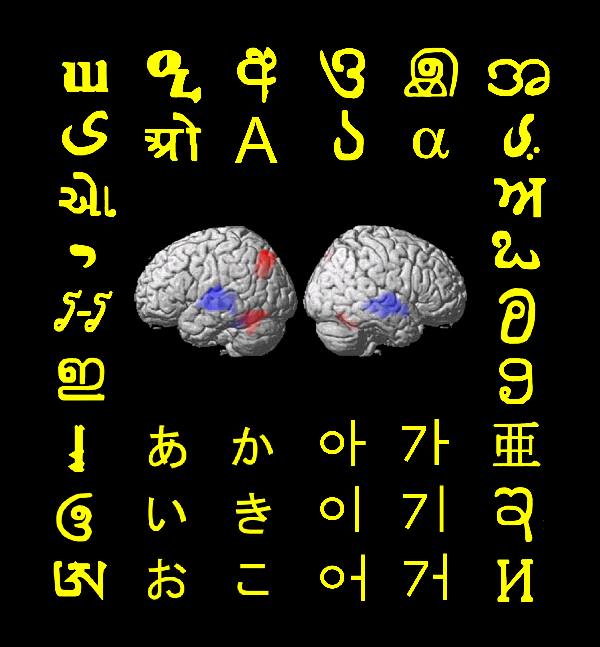Learning Letters in Adulthood: Direct Visualization of Cortical Plasticity for Forming a New Link between Orthography and Phonology.
HFSP Grant Awardee Kuniyoshi L. Sakai and colleagues
It is not known which brain regions in adults show plasticity
for learning letters. In the April 22 issue of Neuron, HFSP Young Investigator
Kuniyoshi L. Sakai and colleagues reported that the left inferior temporal and
parietal regions (red regions in an MRI map) are critical in learning to
associate letters with speech sounds, whereas the bilateral superior temporal
regions (blue regions) are recruited for already acquired orthography. The
letters shown under the left and right brains are kana and Hangul letters used
in the study, respectively. Each of the other letters represents a vowel (/a/,
/i/, /o/; except Hebrew) used currently in the world. This fMRI study
establishes that the human adult brain is still adaptable to new associations
between orthographic and phonological stimuli, and that this type of learning is
achieved in only two days by the rapid plasticity of a functional system
critically involving the left inferior temporal and parietal regions.

Reference:
"Learning Letters in Adulthood: Direct
Visualization of Cortical Plasticity for Forming a New Link between Orthography
and Phonology." Hashimoto, R. and Sakai, K. L. Neuron, 42, 311-322 (2004).